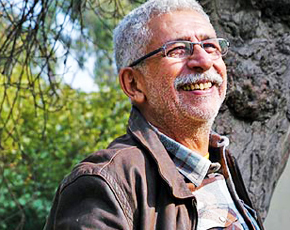Under Method Acting, actors bring themselves as close as possible to experiencing the real thing when portraying characters. It’s Method Acting that makes a Robert De Niro train to be as good as a professional boxer in order to play Jake La Motta and inspires an Al Pacino to behave like a gangster off-camera to play Tony Montana as convincingly as possible. While the popular perception is that the Method is more helpful to enact extraordinary characters, the Method’s greatest achievement, in fact, has been to take the regular and transform it into the exceptional. If that were the case then how come this technique doesn’t find many takers in Bollywood, where 9 out of 10 times the hero is an average person who does something outstanding? One of the reasons why the Method doesn’t work for Hindi cinema is that our heroes might be people from everyday life but in spite of that they don’t have regular attached to them. In Hindi cinema the hero mostly follows a strict code of conduct making it almost impossible to differentiate between two similar characters played across decades. Two good screen cops will invariably end up looking the same unless the background of the protagonist is specified. Aamir Khan played a car mechanic in Ishq (1997) but the only time we see him in the garage is when the rich heroine’s father tries to buy his love. The only other time a mechanic looks like a mechanic is when the heroine comes a-calling like in Chalti Ka Naam Gadi (1958).
The world first witnessed Method Acting in Marlon Brando’s performance as Stanley Kowalski in A Streetcar Named Desire (1951) and later in the mid-1960s acting guru Lee Strasberg imparted the same techniques unto Paul Newman, Dustin Hoffman, Al Pacino, Jack Nicholson and Robert De Niro. Many of these actors took the learning of the technique in order to discover the characters they portrayed and thereby regular people such as a sports goods salesman (Paul Newman in Sweet Bird of Youth, 1962), a college graduate coming of age (Dustin Hoffman in The Graduate, 1967) and an upper-class American who works on oil-rigs (Jack Nicholson in Five Easy Pieces, 1970) looked plausible. By comparison Hindi cinema’s characters are always treated in extreme hues and the hero suffers the maximum.
Mostly seen as a college student, Hindi cinema’s hero rarely warrants any kind of introspection or preparation. The method makes the actor question their character’s motivation and just how many different ways can an Indian college kid be played! It’s only in the last few years that scripts are making an effort to describe the hero’s profession and although we’ve had chefs, business tycoons, brigands and such but in Hindi cinema being the hero is the protagonist’s full-time profession.
But the thing that has rendered Method Acting almost useless in Bollywood is the overwhelming desire to make the hero look cool. Unless the title of the film suggests a trait every hero must look in control and come across as someone who minds the p’s and q’s even when asleep. The greater the stature of the actor in Hindi cinema, the more natural they want to appear and concepts like Method Acting don’t aid its appearance. You could never imagine Prithviraj Kapoor think beyond simple theatrics while portraying Akbar in Mughal-e-Azam (1960). Even trained actors such as Nasseruddin Shah or Om Puri never made too much about the manner in which they go about their characters. In an interview, Nasseruddin Shah once said that the Brando school of Method is all ‘nose picking, bum scratching’ to make it all look real and he never really cared about it. Shah’s great flair for making his most difficult characters like the Parsi Phirojshah in Pestonjee (1988), the Catholic worker in Albert Pinto Ko Gussa Kyon Ata Hai (1980) or the Portuguese scion Ruiz Pereira in Trikal (1985) reveal the elements of the Method yet remain far removed from it. What separates Shah from most of the actors before him is that he was perhaps the first lead actor who gave equal importance to both the visual, as well as aural appeal of his characters. Save some modulation in the pitch, most Indian actors would end up sounding the same irrespective of the characters they played and Shah is the first one who changed it.
Many actors push the envelope for that streak of authenticity in their characters. De Niro tracked down the tailor who stitched Al Capone’s silk underwear and got some made in the same manner to live the character even though The Untouchables (1987) didn’t have a single scene where the fabled boxers were displayed. But in Bollywood there is no room for that kind of work ethic. It’s not like Bollywood hates things like Method Acting in fact, there are many westerners who, like Naseeruddin Shah, don’t think much of such tools. While working with Dustin Hoffman in The Marathon Man (1976), Sir Laurence Olivier got tired of seeing his American co-star stay up for days or sprint just before the shot to be in character and said ‘Why not try acting.’
Poll:
[polldaddy poll=6412668]
Born a cinephile and a close observer of society, the author is an award-winning documentary filmmaker/writer. He is a regular contributor to leading Indian publications and is currently working on his first book. Find out more about him here.
The views expressed by this blogger and in the following reader comments do not necessarily reflect the views and policies of the Dawn Media Group.














































